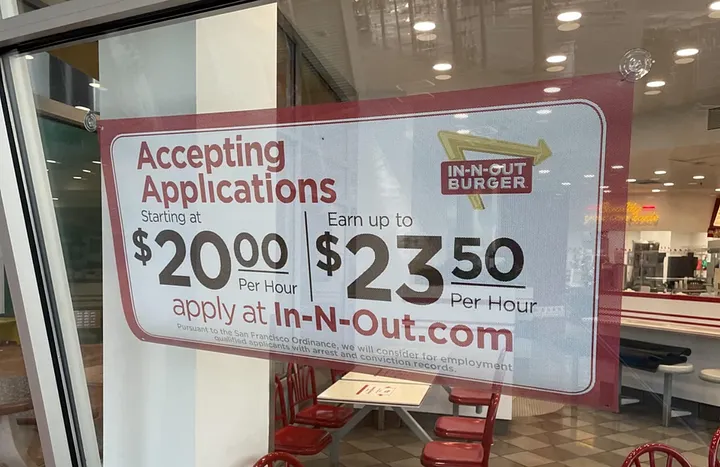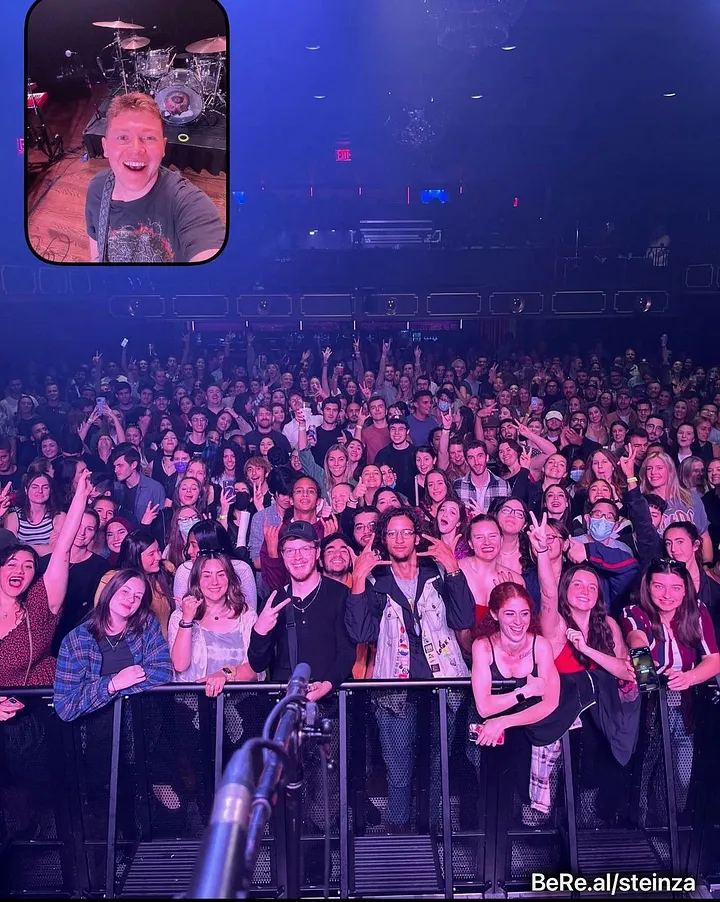How Creators like Steinza turned to web3


If you’re guilty of listening to the same songs over and over again (no shame!) you probably missed the news that 23-year-old singer/songwriter Zachary Stein — who has recently found his way onto Spotify’s Fresh Finds playlist — will be performing his first headline show this weekend at Nashville’s beloved East Room.

Previously an opener for remix-rich Hallucinogenics artist, Matt Maeson, Stein (better known by stage name Steinza) has spent the last year living the aspiring musician’s dream: touring the country and meeting the fans that have propelled him to nearly a quarter of a million monthly listeners. Pretty good for someone who describes themselves as “just 23 trying to get to 24.”
While undoubtedly surreal for an artist only five years after his high school graduation — the reality remains that following your dreams (even if they land you on stage at sold-out shows) doesn’t necessarily equate to financial success.
This month, ZipRecruiter released data on the average annual pay in the U.S. for a touring musician coming in at an underwhelming $49,110 a year — or $23.61 an hour. On our way to catch Steinza’s show in Nashville, we realized he could be making the same amount if he had stayed in his hometown of Virginia Beach and snagged a job at In-N-Out Burger.

The recent onslaught of lawsuits against live music giants Ticketmaster and Live Nation are only the tip of the iceberg when it comes to difficulty faced by artists who were promised revenue streams and instead are looking at muddied creeks.
Sure, Taylor Swift certainly isn’t hurting for cash — but what about the independent artists like Steinza?
The dollars made from a show’s ticket sales have to first clear booking and processing fees along with taxes before even making their way to the artist’s accounts. From there, venue fees and show staffing have to be paid in addition to covering stage construction costs and liability insurance. After those deductions, artists have to split the remaining revenue with their management teams and also pay sound engineers, lighting technicians, transportation costs and cover rehearsal and travel expenses for themselves and their crew. Don’t even get us started on the recording and production costs they have to burden before they even land a touring gig.
Let’s be real: those definitely aren’t getting paid by modest merch table sales. So how do artists like Zach make playing their dreamy indie-pop for audiences worldwide a sustainable career in spite of those figures?
Steinza’s advantage (outside of his lush vocals) is growing up in the social media age which ensured he was no stranger to the viral takeover of web3, gaining massive popularity among Creators over the last two years. Driven by taglines like “the internet you own” web3 offers enormous opportunity to the creator economy including (but certainly not limited to):
1. Enabling Creators’ full ownership of their content, data, brand, and tools
2. Eliminating unnecessary platforms and intermediaries between creators and their fanbase
3. Transparent and direct revenue pathways based on creativity rather than ad deals, affiliates, and promotions
Considering recent statistics report that becoming a digital content creator is the fourth most popular career goal for Gen Z, who make up 60% of all TikTok users, it’s no surprise that the question in Steinza’s head long before he met Aspen VP, Jeremy Williams, at a show in NYC was “how can I make web3 work for me?”

When the two connected backstage at Irving Plaza, the digital native was curious about how to find his footing in NFTs and began talking with Williams about the pressure of choosing between his dreams and establishing financial security at a time when cost of living is intimidatingly high.
While he’d heard of other artists releasing NFT collections, his main critique was that no NFT drop he’d seen had recognized the community built on a venue’s floor or captured the energy between a musician and their fans during a live performance.
Steinza wasn’t shy, either. He wasted no time before asking what creators everywhere are thinking: can NFTs actually deliver a mutually beneficial opportunity to increase earnings while delivering real value to fans — or is it all just crypto hype? And if there was a way, how the hell was he supposed to convert concert-goers into web3 wallet holders?
Williams came back to work after the weekend and Aspen took it from there.
For the very first time on Friday, February 17th, Steinza will be bringing his IRL audience online with an exclusive offer for his Nashville audience to claim no-cost NFTs granting them exclusive access to a virtual screening of the show and priority access to own multimedia memories from the concert.

Aspen’s creator-centric platform empowers users like Steinza to innovatively engage their audiences without overcomplicating the process for fans.
Let’s break down how it works.
1. Concert-goers will be the only group with access to a custom QR code accessible from the East Room that takes them to Steinza’s Claim Pass mobile landing page.
2. From there, visitors are asked to provide their email address to receive their Steinza Digital Ticket Stub
3. Email Links to claim Steinza Stubs will be distributed Saturday, February 18th to prevent fans from missing any part of the show.
4. The single-use link shared via email will direct ticket-holders to Steinza’s Storefront on Aspen where they can claim their free NFT, granting them exclusive access to a virtual screening of the show.
5. Further, NFT holders will also receive priority access to mint additional, individual memories (in the form of multimedia snippets) from the show, produced by NFTYTunes. More on that below.
6. Once the Memories Mint goes live on Aspen, Steinza Stub holders will be the first to see the 125 multimedia NFTs available for sale and will have the opportunity to purchase them before the mint is opened to the public.
And just like that, Steinza’s fanbase has seamlessly made it through a complex web3 mint process with just a few clicks of a button and can revisit the spirit of his show whenever they want — at no additional cost to them.

And what’s in it for Zach? After delivering free value to his Nashville audience, he’s inviting his entire fanbase to own show memories whether they made it to the Music City or not. The collection will include 125 multimedia NFTs broken into three tiers totaling a collection value of $1,750 USD, or the equivalent of what he could generate from a whopping 750,000 streams on Spotify.
As of this publication, Steinza is racking up 210,000 monthly streams on Spotify. This collection, created by a show he’s already performing, offers him the ability to make in one drop what would otherwise take him nearly four months to earn.
Four months of income in one night. And what if he decided to do it for a whole leg of a tour? It would take him less than one month to make the annual income for a touring musician in the U.S.
While Aspen’s minting and marketing tools make a perfect pair for musicians on the road, they aren’t the only creators who can massively increase their monthly income via innovative NFT integrations. Our QR code and single use distribution links are easy-to-use solutions for standard or marketing-driven mints alike.
Here’s a few of our favorite ideas for existing web3 creators:
1. Incorporate a QR code to a free NFT collection at your next art show or gallery opening to thank visitors for attending. Or maybe grant them a spot on your next paid collection’s allowlist to increase the type of revenue you don’t have to split with venues or show collaborators.
2. Spin up a wheatpaste campaign timed alongside large-scale NFT industry events with a QR code driving traffic to a Claim Link landing page to generate hype for your next mint or as a creative way to grant allowlist for an upcoming drop.
3. Email Newsletter Creators, rejoice! You can bypass the QR code step and distribute single-use NFT claim links directly to some, any or all of your contacts for a web3-approved way to deliver members-only content or surprise your readers with a freebie.
To date, it’s been too complicated to make money in web3 — and wasn’t the whole point that it’d be easier? Aspen simplifies the process for Creators to design, build, and deliver experiences their customers, fans and communities love, regardless of their experience in crypto, NFTs or even ecommerce.
Whether you are a diehard degen or new to the space, our no-code, Creator-centric platform transforms previously complex processes into just a few simple steps to stand up your very own Web3-based business.
Note: our Minting and Marketing tools are currently only available with an Early Access Pass and are launching to the public this Spring.
If you’re reading this and are looking to get started now, get in touch.